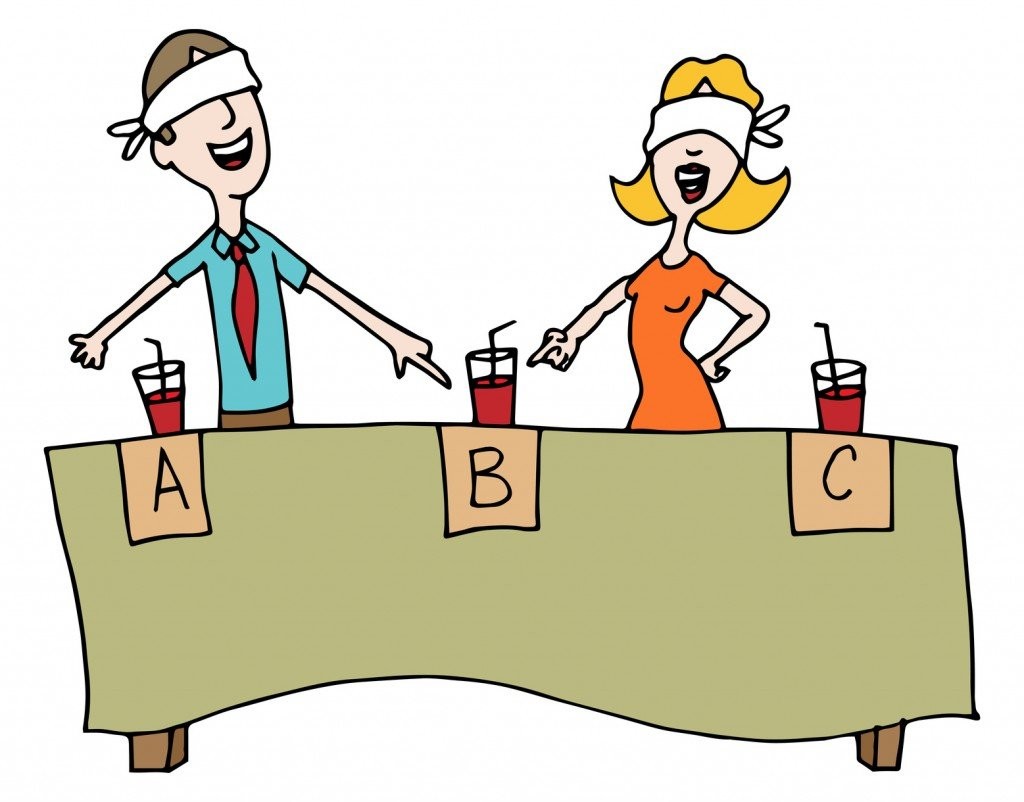Why Does Soda Have Caffeine? It’s a question that many ponder as they reach for their favorite fizzy beverage. At WHY.EDU.VN, we delve into this intriguing topic, exploring the historical roots, scientific findings, and potential reasons behind the presence of caffeine in soda, offering clarity and understanding. Learn about stimulants, the kola nut and the buzz.
Table of Contents
- A Brief History of Caffeine in Soda
- 1.1 The Kola Nut Connection
- 1.2 The Coca-Cola Story
- Is Caffeine a Flavor Enhancer?
- 2.1 The Flavor Argument
- 2.2 Scientific Studies on Caffeine and Taste
- 2.3 Debunking the Myth
- Potential Reasons for Caffeine in Soda
- 3.1 The Stimulant Effect
- 3.2 Addiction and Habit Formation
- 3.3 Marketing and Consumer Appeal
- The Caffeine Content in Popular Sodas
- 4.1 Coke vs. Pepsi vs. Mountain Dew
- 4.2 Comparing Soda to Coffee
- Health Implications of Caffeine Consumption
- 5.1 Benefits of Caffeine
- 5.2 Risks of Excessive Caffeine Intake
- 5.3 Moderation is Key
- The Regulatory Landscape of Caffeine in Soda
- 6.1 FDA Regulations
- 6.2 Industry Standards
- The Future of Caffeinated Sodas
- 7.1 Trends in the Beverage Industry
- 7.2 Innovations in Caffeine Alternatives
- Expert Opinions on Caffeine in Soda
- 8.1 Nutritionists’ Perspectives
- 8.2 Scientists’ Insights
- Debates and Controversies Surrounding Caffeine in Soda
- 9.1 Ethical Considerations
- 9.2 Health Concerns
- Alternatives to Caffeinated Sodas
- 10.1 Natural Energy Boosters
- 10.2 Healthy Beverage Options
- Frequently Asked Questions (FAQs) About Caffeine in Soda
1. A Brief History of Caffeine in Soda
The story of caffeine in soda is deeply intertwined with the history of some of the world’s most iconic beverages. Understanding where it all began sheds light on why caffeine remains a common ingredient today.
1.1 The Kola Nut Connection
Originally, caffeine in cola drinks was derived naturally from the kola nut. This nut, native to West Africa, contains caffeine and was a key ingredient in early cola recipes. The kola nut provided both the caffeine kick and a distinctive flavor profile.
1.2 The Coca-Cola Story
Coca-Cola, one of the most recognizable brands globally, initially included extracts from both the coca plant and the kola nut. The coca plant extract was later removed, but the kola nut extract, with its natural caffeine, remained. This historical use established a precedent for caffeine in soda.
2. Is Caffeine a Flavor Enhancer?
One of the most debated aspects of caffeine in soda is whether it actually contributes to the flavor. Soft drink manufacturers have often claimed that caffeine is added to impart a specific taste, but scientific evidence suggests otherwise.
2.1 The Flavor Argument
For years, the soft drink industry has maintained that caffeine is essential for the characteristic flavor of colas and other sodas. This argument was particularly prominent when the FDA considered eliminating caffeine from soft drinks in 1980.
2.2 Scientific Studies on Caffeine and Taste
Several studies have investigated whether caffeine truly enhances the flavor of soft drinks. One notable study by Griffiths and Vernotica, published in the Archives of Family Medicine, found that only a small percentage of participants could detect caffeine at concentrations typically found in sodas. Another study by Keast and Riddell in Appetite showed that participants could not distinguish between caffeinated and non-caffeinated cola beverages.
2.3 Debunking the Myth
The consensus from scientific research is that caffeine does not significantly contribute to the flavor of soda. These studies suggest that other factors, such as sweeteners and flavorings, play a much more prominent role in the taste of these beverages. For those seeking reliable answers to complex questions, WHY.EDU.VN provides expert-backed insights and comprehensive explanations.
3. Potential Reasons for Caffeine in Soda
If caffeine isn’t primarily a flavor enhancer, why is it still added to many sodas? Several theories attempt to explain its presence, focusing on the stimulant effect, potential for addiction, and marketing strategies.
3.1 The Stimulant Effect
Caffeine is a well-known central nervous system (CNS) stimulant. It can increase alertness, improve mood, and reduce fatigue. The stimulating effect of caffeine may be a key reason why it is included in soda, providing consumers with a mild energy boost. This stimulation can be particularly appealing in combination with the high sugar content of many sodas.
3.2 Addiction and Habit Formation
Caffeine is mildly addictive, and regular consumption can lead to dependence. The inclusion of caffeine in soda may contribute to habit formation, encouraging consumers to purchase these beverages repeatedly. Studies have shown that even relatively low daily doses of caffeine can lead to withdrawal symptoms when discontinued.
3.3 Marketing and Consumer Appeal
From a marketing perspective, caffeine can enhance the appeal of soda by providing a perceived benefit – increased energy and alertness. This can be a powerful selling point, especially among younger consumers who may be looking for a quick pick-me-up. The presence of caffeine can also create a sense of familiarity and satisfaction, as consumers associate the beverage with a mild stimulant effect.
4. The Caffeine Content in Popular Sodas
The amount of caffeine varies among different soda brands and flavors. Comparing the caffeine content in popular sodas can provide insights into why some brands are more stimulating than others.
4.1 Coke vs. Pepsi vs. Mountain Dew
- Coca-Cola: Approximately 34 mg of caffeine per 12-ounce (350 ml) can.
- Pepsi: Approximately 38 mg of caffeine per 12-ounce (350 ml) can.
- Mountain Dew: Significantly higher, with approximately 54 mg of caffeine per 12-ounce (350 ml) can.
These figures demonstrate that Mountain Dew contains a considerably higher dose of caffeine compared to Coke and Pepsi.
4.2 Comparing Soda to Coffee
A typical 8-ounce cup of coffee contains around 95 mg of caffeine. This means that a single cup of coffee has more than double the caffeine content of a can of Coke or Pepsi. However, consuming multiple sodas throughout the day can still lead to a significant caffeine intake. Here’s a table comparing caffeine content:
| Beverage | Caffeine Content (per serving) |
|---|---|
| Coffee (8 oz) | 95 mg |
| Coca-Cola (12 oz) | 34 mg |
| Pepsi (12 oz) | 38 mg |
| Mountain Dew (12 oz) | 54 mg |



5. Health Implications of Caffeine Consumption
While caffeine can offer certain benefits, excessive consumption can lead to adverse health effects. Understanding the potential risks and benefits is crucial for making informed choices about soda consumption.
5.1 Benefits of Caffeine
- Increased Alertness: Caffeine can enhance mental alertness and cognitive function.
- Improved Mood: It can stimulate the release of dopamine, leading to improved mood and reduced feelings of fatigue.
- Enhanced Physical Performance: Caffeine can improve physical endurance and reduce perceived exertion during exercise.
5.2 Risks of Excessive Caffeine Intake
- Anxiety and Nervousness: High doses of caffeine can cause anxiety, nervousness, and irritability.
- Insomnia: Caffeine can interfere with sleep patterns, leading to insomnia and daytime fatigue.
- Increased Heart Rate and Blood Pressure: Excessive caffeine intake can elevate heart rate and blood pressure, which may be problematic for individuals with cardiovascular conditions.
- Digestive Issues: Caffeine can stimulate bowel movements and may cause diarrhea or stomach upset in some individuals.
5.3 Moderation is Key
For most adults, moderate caffeine consumption (up to 400 mg per day) is considered safe. However, individual tolerance varies, and some people may be more sensitive to the effects of caffeine. It is important to be mindful of your caffeine intake and adjust it based on your personal tolerance and health status.
6. The Regulatory Landscape of Caffeine in Soda
The regulation of caffeine in soda is overseen by governmental agencies and influenced by industry standards. These regulations aim to ensure consumer safety and provide transparency regarding caffeine content.
6.1 FDA Regulations
In the United States, the Food and Drug Administration (FDA) regulates caffeine as a food additive. The FDA has established guidelines for the safe use of caffeine in food and beverages, but there are no specific limits on the amount of caffeine allowed in soda. The FDA monitors caffeine consumption and may take action if it determines that caffeine poses a significant health risk to consumers.
6.2 Industry Standards
The beverage industry also plays a role in regulating caffeine content. Many companies voluntarily adhere to certain standards and guidelines to ensure the safety and quality of their products. These standards may include labeling requirements and restrictions on the amount of caffeine added to beverages.
7. The Future of Caffeinated Sodas
The beverage industry is constantly evolving, with new trends and innovations shaping the future of caffeinated sodas. Consumers are becoming more health-conscious, leading to a demand for healthier alternatives and lower-caffeine options.
7.1 Trends in the Beverage Industry
- Healthier Options: There is a growing trend towards lower-sugar, lower-calorie, and naturally sweetened sodas.
- Functional Beverages: Beverages that offer additional health benefits, such as added vitamins, minerals, or antioxidants, are gaining popularity.
- Natural Caffeine Sources: Some companies are exploring the use of natural caffeine sources, such as guarana or yerba mate, instead of synthetic caffeine.
7.2 Innovations in Caffeine Alternatives
Researchers are also exploring caffeine alternatives that can provide a similar energy boost without the negative side effects. These alternatives include:
- Theacrine: A purine alkaloid similar to caffeine but with a longer-lasting and less jittery effect.
- Dynamine: A stimulant that enhances energy and focus without increasing heart rate or blood pressure.
- L-Theanine: An amino acid that promotes relaxation and focus, often combined with caffeine to mitigate its negative effects.
8. Expert Opinions on Caffeine in Soda
To gain a deeper understanding of the role of caffeine in soda, it is helpful to consider the perspectives of nutritionists and scientists. Their insights can provide valuable context and guidance for making informed choices.
8.1 Nutritionists’ Perspectives
Nutritionists generally advise consumers to limit their intake of caffeinated sodas due to their high sugar content and potential for adverse health effects. They recommend opting for healthier beverage choices, such as water, unsweetened tea, or sparkling water with fruit.
8.2 Scientists’ Insights
Scientists emphasize that while caffeine can offer certain benefits, it is important to be mindful of individual tolerance and potential risks. They recommend monitoring caffeine intake and being aware of the signs of excessive consumption, such as anxiety, insomnia, and digestive issues.
9. Debates and Controversies Surrounding Caffeine in Soda
The presence of caffeine in soda is not without controversy. Ethical considerations and health concerns often fuel debates about the appropriateness of adding caffeine to beverages, particularly those marketed to children and adolescents.
9.1 Ethical Considerations
Some critics argue that adding caffeine to soda is unethical because it can lead to addiction and dependence, particularly among young people. They contend that soda companies are intentionally adding caffeine to increase sales, even if it means compromising the health and well-being of consumers.
9.2 Health Concerns
The health concerns surrounding caffeine in soda primarily revolve around the potential for excessive consumption and its associated risks. High caffeine intake has been linked to anxiety, insomnia, increased heart rate, and other adverse effects. Additionally, the combination of caffeine and high sugar levels in soda can contribute to weight gain, tooth decay, and other health problems.
10. Alternatives to Caffeinated Sodas
For those looking to reduce their caffeine intake or find healthier beverage options, there are many alternatives to caffeinated sodas. These alternatives can provide energy and hydration without the negative side effects.
10.1 Natural Energy Boosters
- Green Tea: Contains a moderate amount of caffeine along with antioxidants and other beneficial compounds.
- Yerba Mate: A traditional South American beverage that provides a sustained energy boost without the jitters.
- Guarana: A natural source of caffeine that is often used in energy drinks and supplements.
10.2 Healthy Beverage Options
- Water: The most essential beverage for hydration and overall health.
- Sparkling Water: Provides a fizzy alternative to soda without the added sugar and caffeine.
- Herbal Tea: Offers a variety of flavors and health benefits without caffeine.
- Fruit-Infused Water: Adds a refreshing twist to plain water with natural flavors and vitamins.
11. Frequently Asked Questions (FAQs) About Caffeine in Soda
To further clarify the topic of caffeine in soda, here are some frequently asked questions:
Q1: Why is caffeine added to soda?
A: Caffeine is added to soda primarily for its stimulant effect, which can increase alertness and improve mood. While manufacturers have claimed it enhances flavor, scientific studies suggest otherwise.
Q2: How much caffeine is in a can of Coke?
A: A 12-ounce can of Coca-Cola contains approximately 34 mg of caffeine.
Q3: Is caffeine in soda bad for you?
A: Moderate caffeine consumption is generally safe, but excessive intake can lead to anxiety, insomnia, and other health issues. The high sugar content in many sodas also poses health risks.
Q4: Can caffeine in soda be addictive?
A: Yes, caffeine is mildly addictive, and regular consumption can lead to dependence and withdrawal symptoms.
Q5: Are there caffeine-free sodas available?
A: Yes, many brands offer caffeine-free versions of their popular sodas.
Q6: What are some healthier alternatives to caffeinated soda?
A: Healthier alternatives include water, sparkling water, herbal tea, and fruit-infused water.
Q7: Does caffeine really enhance the flavor of soda?
A: Scientific studies suggest that caffeine does not significantly contribute to the flavor of soda.
Q8: How does the caffeine content of soda compare to coffee?
A: A typical cup of coffee contains significantly more caffeine than a can of soda.
Q9: What are the long-term effects of drinking caffeinated soda?
A: Long-term consumption of caffeinated soda can lead to health issues such as anxiety, insomnia, weight gain, and tooth decay.
Q10: Is it safe for children to drink caffeinated soda?
A: It is generally not recommended for children to consume caffeinated soda due to the potential for adverse health effects.
Understanding why does soda have caffeine involves exploring its history, debunking myths, and considering the health implications. While caffeine may provide a temporary boost, moderation and awareness are key to making informed choices. For more in-depth answers and expert insights, visit WHY.EDU.VN, where curiosity meets knowledge.
Are you still curious about the hidden ingredients in your favorite drinks? Do you have more questions about the effects of caffeine or the latest trends in the beverage industry? Don’t let your curiosity fade! Visit WHY.EDU.VN at 101 Curiosity Lane, Answer Town, CA 90210, United States, or contact us via Whatsapp at +1 (213) 555-0101. Our team of experts is ready to provide you with the answers you seek and guide you toward a world of knowledge. Post your questions on why.edu.vn and unlock a universe of expert insights.